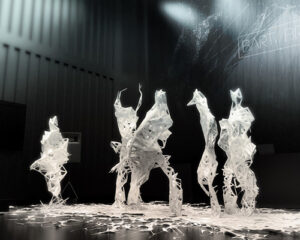The first article, “A Brief Rant on the Future of Interaction Design,” argues that our current touchscreen interfaces are missing out on the rich tactile feedback and 3D manipulation that our hands are capable of. The author thinks future interfaces should engage our bodies more fully, like how we interact with the physical world.
The second article is a follow-up where the author addresses some common responses to his original rant. He clarifies that he’s not against touchscreens entirely, but rather sees them as a sequentual stone to even more immersive and embodied forms of interaction. He also touches on why he’s skeptical of voice commands and gesture controls as complete replacements for physical interfaces.
Putting the two articles together, it seems like the core idea is that our technology should evolve to better adapt to our human capabilities, especially when it comes to how we use our hands to explore and manipulate objects. The author is calling for a future where digital interactions feel just as tangible and expressive as their real-world counterparts.
I actually agree with this vision, even if the exact path to get there is still unclear. I think there’s a lot of room for interfaces to become more tactile and responsive to our natural ways of interacting. At the same time, I wouldn’t want to completely abandon the benefits of touchscreens, like customization. In the real world, there are many examples where people prefer tactility. For example, lots of companies have been trying to introduce laptops with glass clear keyboards. This would undoubtedly make laptops thinner and add an option of a second screen but the majority of users myself included would hate the typing experience because there is something much more satisfying when it comes to physical keystrokes. (This is main reason why people get into expensive mechanical keyboards, I might be people).
On the other hand, despite blackberry’s popularity in the past, keyboards on phones have become a thing of the past as the benefits are simply not worth it due to major compromises like the bulkiness, less space for other components, visuals, and so on. Plus, people treat phones mainly as texting machines, when it comes to typing, it’s on big screens where real work happens.
The articles also raised some good points about the limitations of relying too heavily on voice commands or free-air gestures. While those modalities can be useful in certain contexts, they lack the physical feedback and precision of direct manipulation. So it seems like the ideal interface would offer a mix of input methods that complement each other and cater to different situations.
As someone who spends a lot of time interacting with screens, it’s an exciting prospect to imagine a future where the digital world is combined with a world of haptics to deliver an immersive experience, something akin to Ready Player One.




